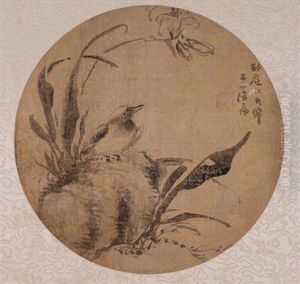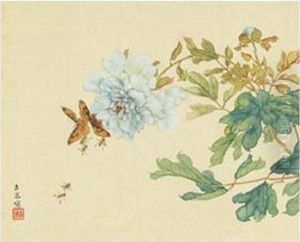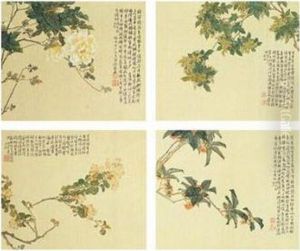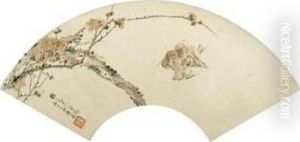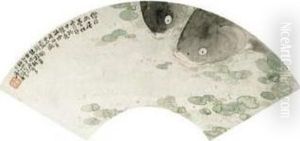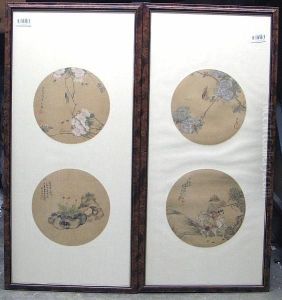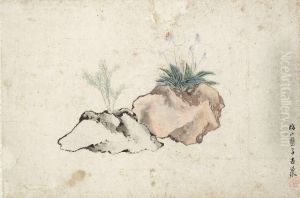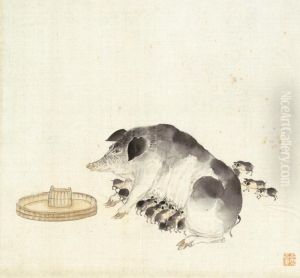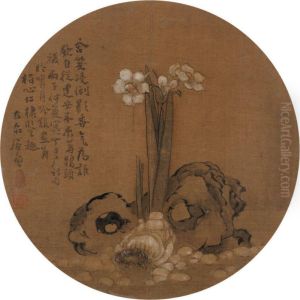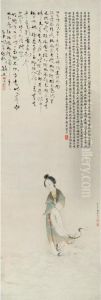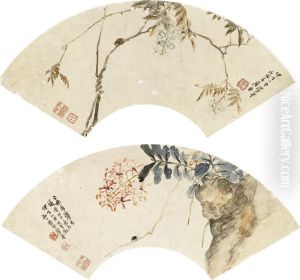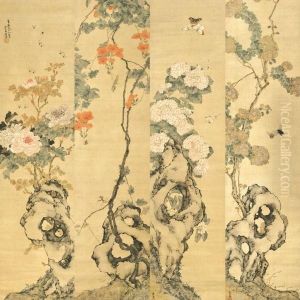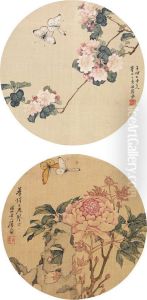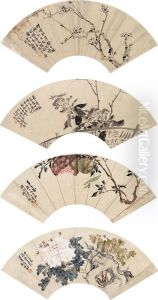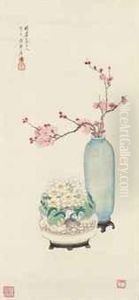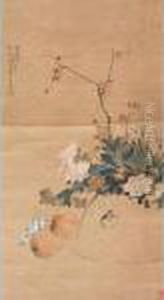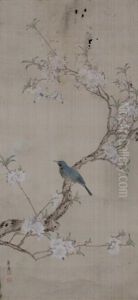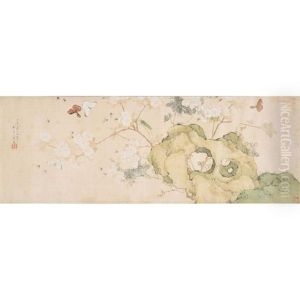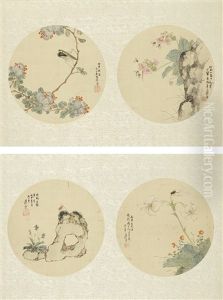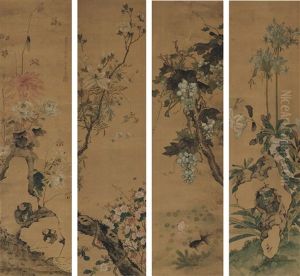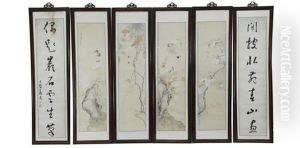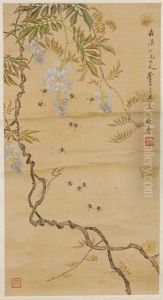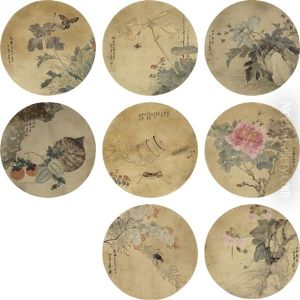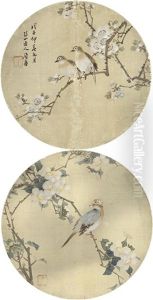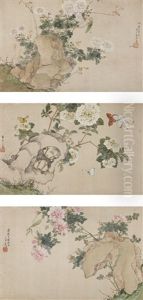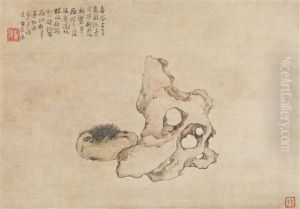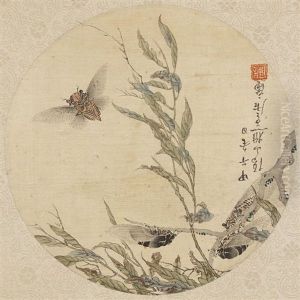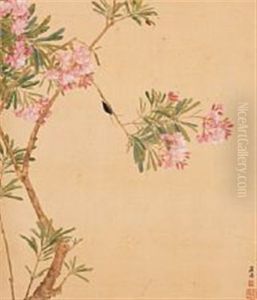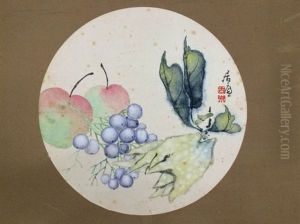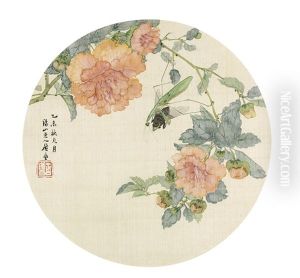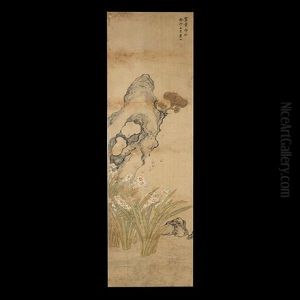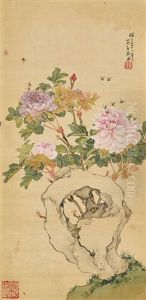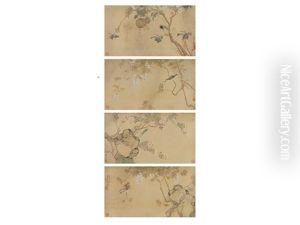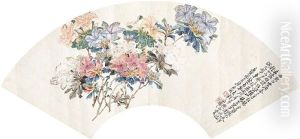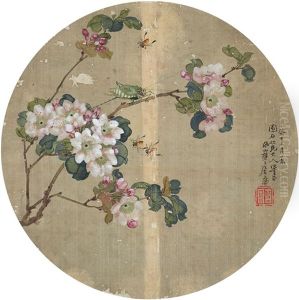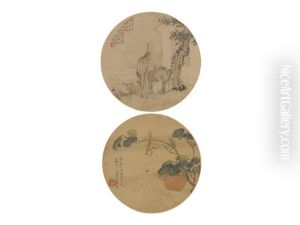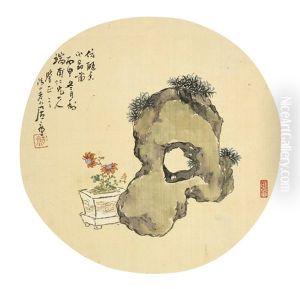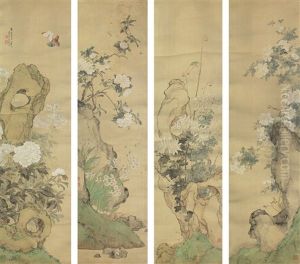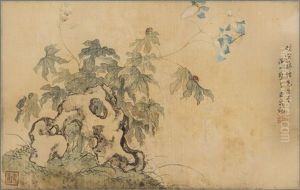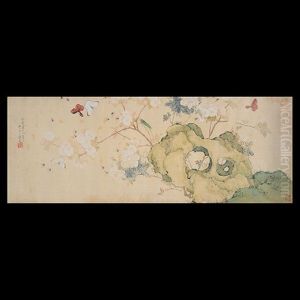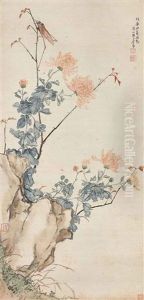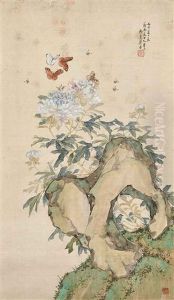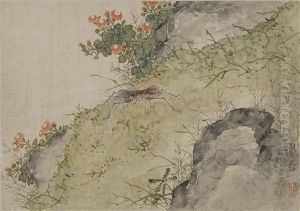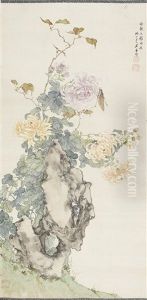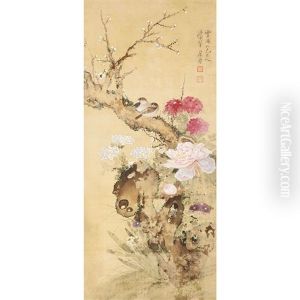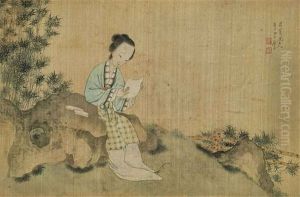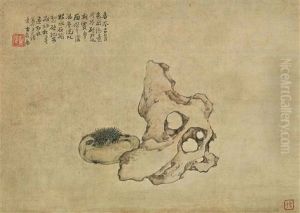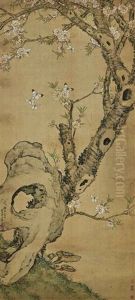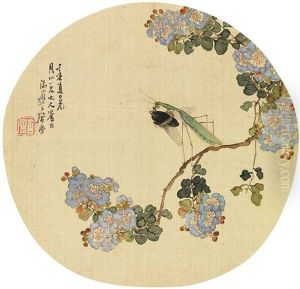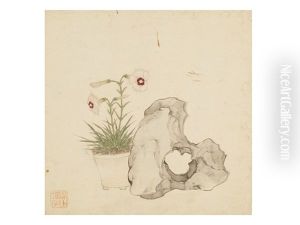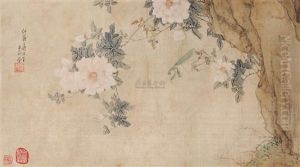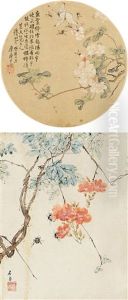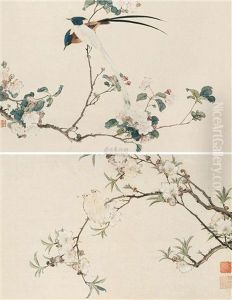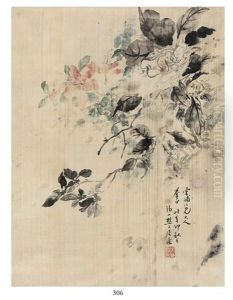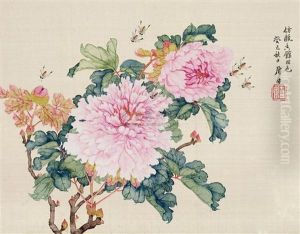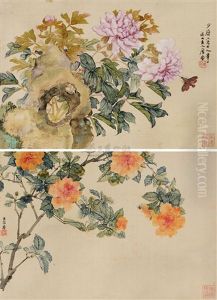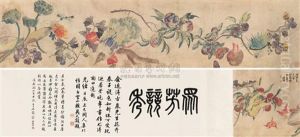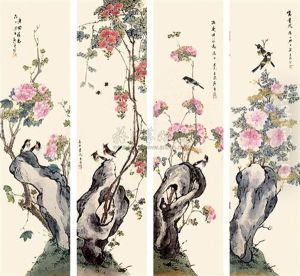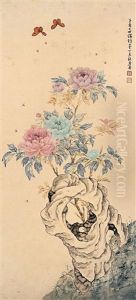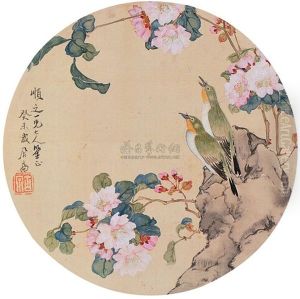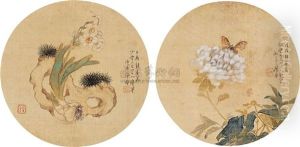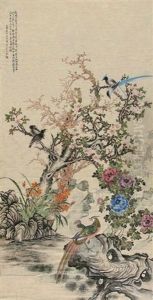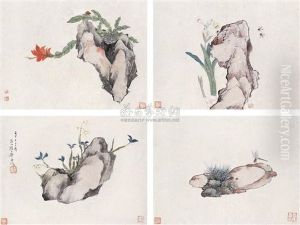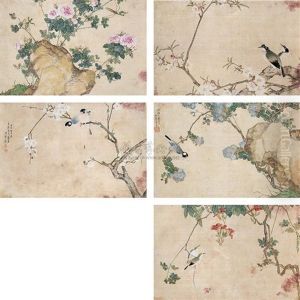Ju Lian Paintings
Ju Lian, born in 1828 in Panyu, Guangdong Province, China, was a prominent figure in Chinese painting during the Qing Dynasty. He, along with his cousin Ju Chao, were celebrated for their contributions to the Lingnan School of painting, a movement that sought to revitalize traditional Chinese art by introducing new techniques and perspectives, incorporating elements from Western art, and focusing on more realistic depictions of nature.
Ju Lian's artistic journey began under the tutelage of his family members, who were established painters themselves. This early exposure to art, combined with his natural talent, set the foundation for his future achievements. He was known for his exquisite flower-and-bird paintings, a genre in which he excelled and innovated by using vibrant colors and dynamic compositions. His work not only demonstrated mastery of traditional Chinese brushwork but also reflected a unique stylistic evolution, embracing and adapting influences from Western art, especially in terms of realism and perspective.
Throughout his career, Ju Lian traveled extensively across China, drawing inspiration from the country's diverse landscapes and flora. These experiences enriched his palette and deepened his understanding of nature, qualities that were vividly reflected in his artwork. Alongside his cousin Ju Chao, he co-authored the influential 'Mustard Seed Garden Manual of Painting', a comprehensive guide that became a seminal reference for aspiring artists of the time.
Ju Lian's contributions to the field of Chinese art were not limited to his paintings; he was also a respected teacher, imparting his knowledge and techniques to a new generation of artists. His teachings and philosophies played a crucial role in the development of the Lingnan School, bridging the gap between traditional Chinese painting and emerging modernist tendencies.
He passed away in 1904, leaving behind a legacy that would influence Chinese art for years to come. Ju Lian's work continues to be celebrated for its innovative approach to traditional themes and its role in the evolution of Chinese painting. His life and art remain a testament to the enduring appeal of blending tradition with innovation.
